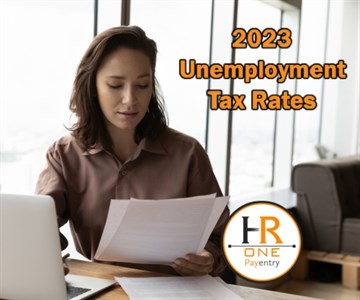Action steps for HR One clients
 |
Between January and March each year, employers receive their Unemployment Tax Rate Notice from the NYS Department of Labor. These letters outline your rate for 2023 based on various factors, including your overall number of claims the previous year and how many weeks former employees collect benefits. These rates are retroactive back to January 1.
For HR One Clients Utilizing Our Unemployment Insurance Administration Service
HR One will review tax rates assigned by NYS Department of Labor to determine if a voluntary contribution is recommended to reduce tax rates for potential savings.
For HR One Payroll Clients
Our role as your payroll provider is to ensure that we have the proper amounts of tax to remit with your quarterly filing. If your rate decreased for the year, you would be owed a refund from us. If your rate increased, we would need to impound the difference in what was collected vs. what is owed so that we can properly file and pay your taxes. If there was no change to your rate, no adjustment will be needed.
As you receive these notices from the state, please forward them to Sara Huck in our office at shuck@peopletopayroll.com. We will complete these adjustments throughout March, and we will notify you of the amount to expect for refund/impound, depending on your specific situation.
If you have any questions, please contact our customer service team at (315) 252-9150. Please keep in mind that these rate audits occur every year.
For All Employers
It’s essential to be familiar with your unemployment tax rate as it is a controllable business expense. Your rate increases or decreases based on the number of unemployment insurance claims against your account AND the length of those claims. You can reduce the number of claims by implementing and following strong policies and procedures within your organization, particularly on corrective discipline and separation.
An employee who is terminated because they violated a policy or procedure is generally ineligible to collect unemployment benefits. Still, the employer must protest such claims and have appropriate documentation to demonstrate why the employee was terminated.
For employees who are eligible to collect, providing them with outplacement support can help them find another position, reducing the number of weeks they claim benefits. Learn more about how HR One can help with outplacement.